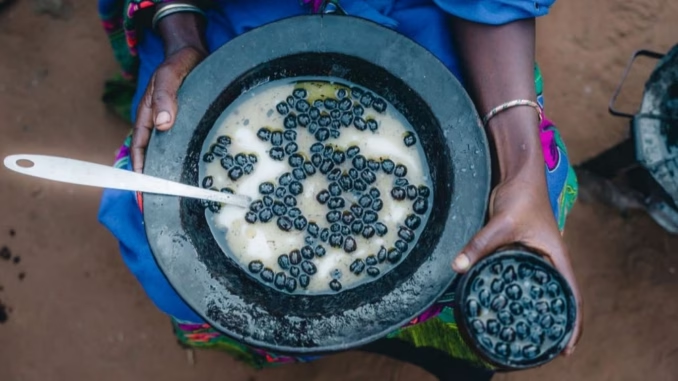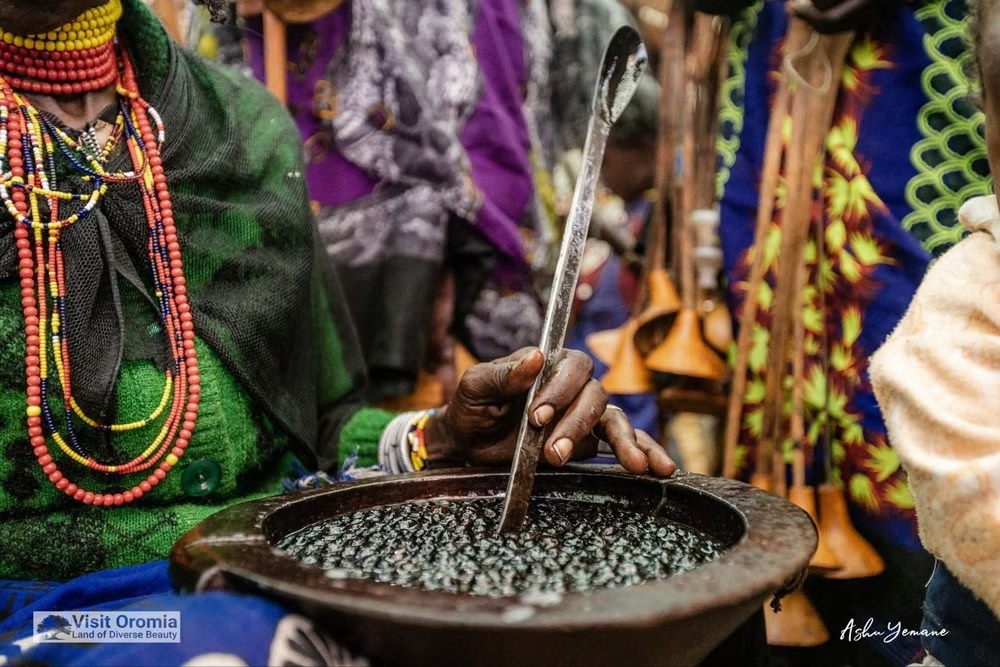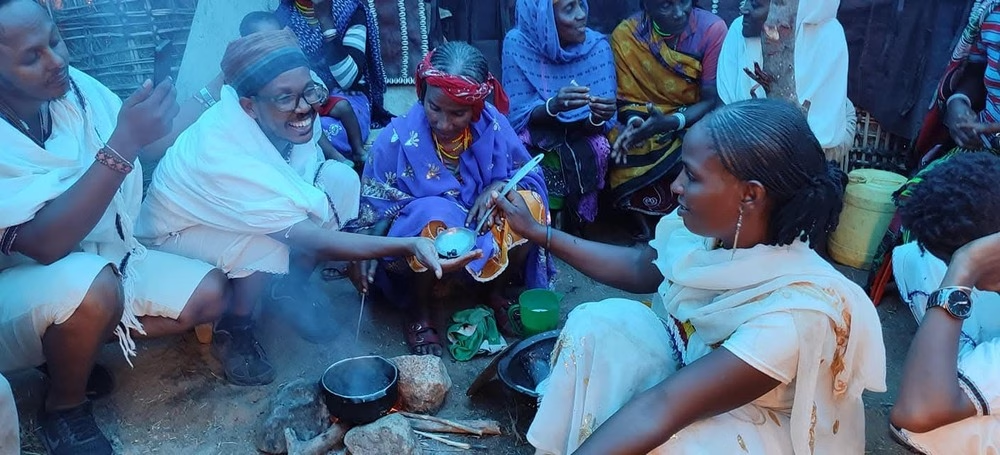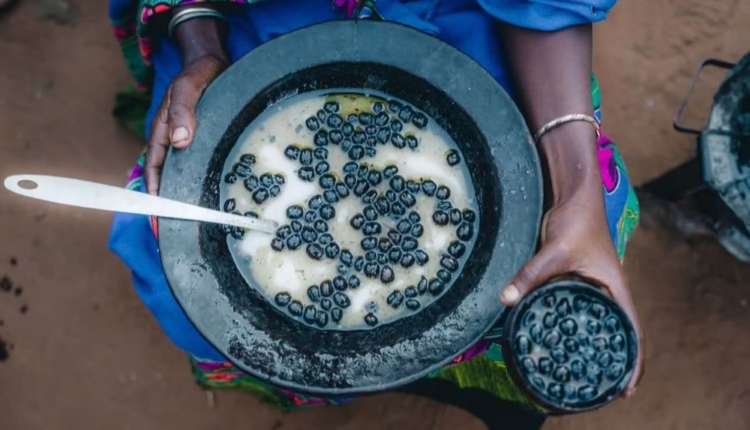Preserving An Age-Old Coffee Tradition With Ethiopia's Buna Qalaa

In Oromia, Ethiopia, a centuries-old tradition turns coffee into a meal—a ceremony of nourishment and connection.
BY TEWODROS BALCHA
BARISTA MAGAZINE ONLINE
Photos courtesy of Visit Oromia
In Ethiopia’s southwest, coffee sizzles before it steams. Butter melts over beans, releasing a smoky, nutty aroma that signals not a drink—but a meal.
Among the Guji people of Oromia, a centuries-old tradition known as Buna Qalaa transforms coffee from beverage to sustenance. The beans are simmered whole in butter and milk, and eaten together: a ritual that blurs the line between nourishment and ceremony, taste and belonging.
“’Buna Qalaa’ literally means ‘slaughtered coffee,’” says Nega Wedajo, Deputy Commissioner of the Oromia Tourism Commission. “It refers to a ritualized coffee meal woven into social life—used in ceremonies, blessings, and formal gatherings. It’s not just food. It’s a symbol of fertility, well-being, and community connection.”
Nega is one of many Ethiopians working to gain global recognition for Ethiopian coffee, including the ancient practices that center around the beverage. “Traditions like Buna Qalaa are treasures,” Nega told Barista Magazine. “They keep communities at the center and show the world that coffee is life—not just a drink.”
The Making of Buna Qalaa
According to Nigatu Elias Dukelle, Head of the Coffee Quality and Certifications Center at the Ethiopian Coffee and Tea Authority’s Bule Hora Branch, the preparation of Buna Qalaa is both precise and poetic—a choreography of patience, scent, and sound.
Only ripe coffee cherries are handpicked and sun-dried whole, their parchment still intact. Before cooking, the tip of each bean is slightly cut, traditionally with the teeth, to help the butter seep in.
A clay pot called kelo is heated until faintly smoking. Butter melts first, then the beans are gently stirred in until they reach a light, even roast—never dark or burnt. The buttery beans are transferred into a wooden bowl, the kori, and hot milk, boiled in the same pot, is poured back in, coating each bean. Finally, the mixture is served in a cup known as mudunu.
“The butter penetrates the bean and enriches it,” Nigatu told Barista Magazine. “You chew it slowly, and it stays in your mouth like gum for hours. It fills you deeply. People say it gives long-lasting energy and even keeps the teeth clean.”


Coffee for Every Passage
Buna Qalaa marks nearly every threshold of life—childbirths, naming ceremonies, weddings, reconciliations, and even the close of mourning. In the Borana Gadaa system, it is offered by elders as a sign of respect and continuity.
Beyond nourishment, Buna Qalaa is believed to restore vitality, sustain endurance, and renew social harmony. Prepared in silence or in song, its aroma fills the home, summoning memory and connection: a sensory bridge between generations.
As Ethiopia seeks recognition from the United Nations Educational, Scientific and Cultural Organization (UNESCO) for its traditional coffee ceremony, regional expressions like Buna Qalaa are also gaining visibility.
Through initiatives such as Visit Oromia’s Tour de Coffee and digital collaborations with Google Arts & Culture, travelers are discovering coffee not just as a drink, but as a living heritage. “Visitors who experience Buna Qalaa describe it as slow, sensory, and unforgettable,” Nega Wedajo says.
Nega also emphasizes that tourism around Buna Qalaa must remain community-led: “This isn’t a performance—it’s a living culture. We want travelers to learn directly from local custodians, and we ensure the benefits return to them.”


Tradition Meets Specialty
For Nigatu, who bridges heritage and the specialty coffee sector, Buna Qalaa represents innovation through preservation.
“Specialty coffee talks a lot about terroir and traceability,” he says. “But traditions like Buna Qalaa show another layer—the human terroir. When you eat coffee instead of drinking it, you taste the land, the butter, and the hands that made it. It’s a full sensory connection to origin.”
He believes the ritual holds lessons for the global coffee industry: “We spend so much energy refining flavor in the cup. But here, flavor is tied to nourishment—to coffee as energy, community, and care. Maybe cafés today can learn from that: Sometimes, innovation means returning to the source.”
A Global Reflection
In modern cafés, where precision and presentation define excellence, Buna Qalaa offers a humbler but deeper lesson—that coffee’s truest meaning lies not in its extraction, but in its sharing.
Its pace and ritual echo contemporary movements toward mindfulness, sustainability, and authenticity. It reminds us that coffee’s richness is not only sensory but social: a bridge between nourishment and narrative.
As Nega puts it: “In every bite of Buna Qalaa lies a quiet truth: Coffee began as communion, not competition. In a world chasing novelty, this ritual whispers something timeless—sometimes the future of coffee is found in its oldest form: eaten, not sipped; shared, not sold.”
ABOUT THE AUTHOR
Tewodros Balcha (Teddy) hails from Ethiopia, a coffeeland where the bean is life-vital. As a connector of Ethiopian and broader African coffee cultures, he shares the continent’s vibrant heritage with the world.
Subscribe and More!
As always, you can read Barista Magazine in paper by subscribing or ordering an issue.
Read the October + November 2025 Issue for free with our digital edition.
For free access to more than five years’ worth of issues, visit our digital edition archives here.
Source: Barista Magazine



